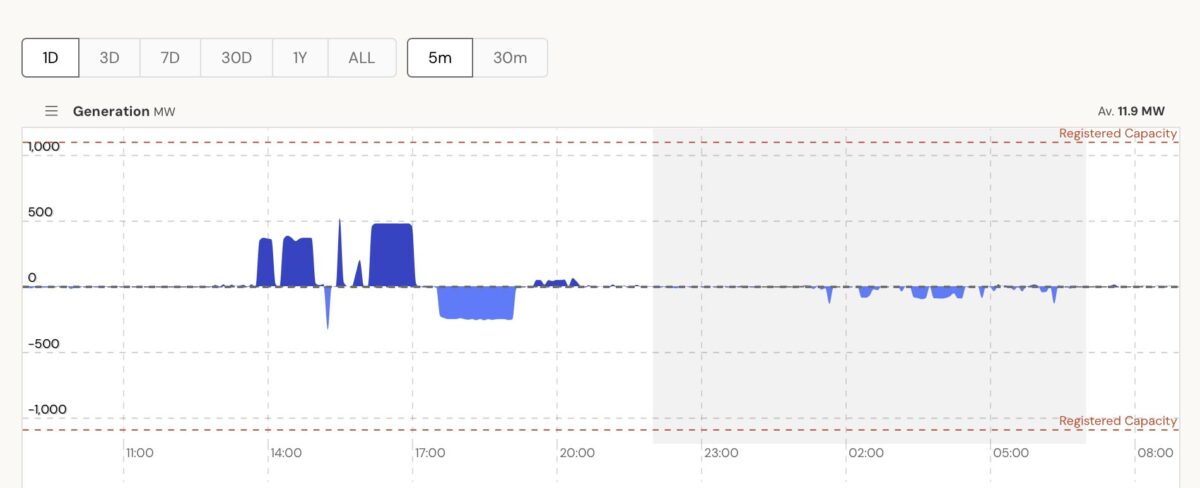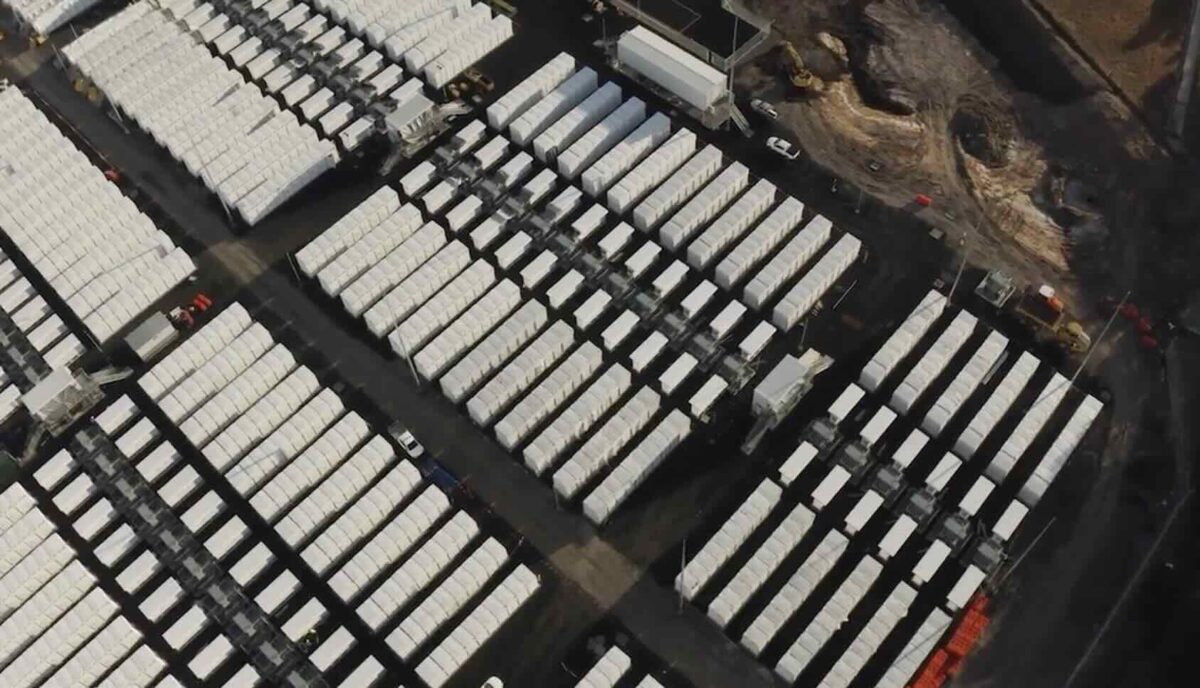The biggest and most powerful battery in Australia has smashed its output record again as it continues to work through the commissioning process ahead of reaching full capacity by the end of the year.
The Waratah Super Battery – owned by Akaysha Energy – will be sized at 850 megawatts (MW) and 1680 megawatt hours (MWh), which makes it the biggest battery of any type in Australia to date, and the most powerful machine ever to be connected to the Australian grid.
It is now more than half way through the commissioning process – which began in September last year – and on Friday afternoon injected a record 530 MW into the grid as it prepared to graduate to a new “hold point” that is part of the lengthy and detailed commissioning process.

That output beat its own previous record output of 369 MW set in early June. The next biggest battery in Australia is the 300 MW, 450 MWh Victoria Big Battery near Geelong, although Waratah may soon be overtaken by the 560 MW, 2240 MWh Collie battery in Western Australia which is also due for completion by the end of the year.
Even then, Waratah will retain its title as the “most powerful” battery – because of its 850 MW power rating – even if it has less storage.
Its specifications are designed to support its primary role as a giant “shock absorber” to the grid, allowing the main transmission lines feeding into the major load centres in Sydney, Newcastle and Wollongong to operate at greater capacity.
That model is expected to replicated in other parts of Australia, particularly as the growing cost of new transmission projects leads to other more efficient and less expensive solutions to the challenge of transporting wind and solar output across the country.
The new but shockingly undersized south-west renewable energy zone in NSW, where only 3.5 GW of wind and solar capacity out of a potential 40 GW have won access rights to the local grid, is likely to be one of the first areas where this model is replicated.
Waratah has already started to deliver its shock-absorber function, officially known as a System Integrity Protection Scheme (SIPS), although only at half capacity for the moment as it works through the commissioning process.
The SIPS contract will require it to deliver up to 700 MW and 1400 MWh of capacity at peak times, and as little as 300 MW and 600 MWh at others, in line with the “sculptured” nature of the deal.
When it intervenes, possibly to address a generation or network outage, three paired generators – the Metz solar farm, the Sapphire wind farm and the Tumut pumped hydro project – may be required to dial down their output to keep the grid in equilibrium. Financial details of these contracts have not been released.
Giles Parkinson is founder and editor-in-chief of Renew Economy, and founder and editor of its EV-focused sister site The Driven. He is the co-host of the weekly Energy Insiders Podcast. Giles has been a journalist for more than 40 years and is a former deputy editor of the Australian Financial Review. You can find him on LinkedIn and on Twitter.

